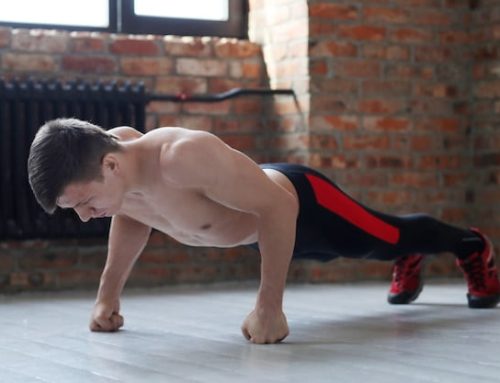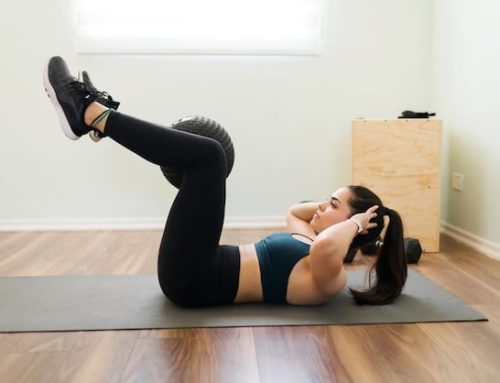Introduction
Bodyweight exercises have been gaining in popularity in recent years, and for good reason. They are a great way to improve your strength, flexibility, and overall fitness without needing any equipment. One question that often comes up with bodyweight workouts is how often you should do them. In particular, is a 6 day PPL split too much? Let’s take a closer look.
What is a PPL Split?
First, let’s define what a PPL split is. PPL stands for push, pull, legs. This is a popular way of dividing up your workouts to focus on specific muscle groups. Push includes exercises like push-ups and shoulder presses, pull includes exercises like pull-ups and rows, and legs includes exercises like squats and lunges. The idea behind a PPL split is to allow for enough rest and recovery time for each muscle group while still hitting each group frequently enough to see progress.
Pros and Cons of a 6 Day PPL Split
Now, onto the question at hand – is a 6 day PPL split too much? Like many things in fitness, the answer is not black and white. There are both pros and cons to doing a 6 day PPL split.
Pros:
– Plenty of workout variety
– High frequency for each muscle group
– Room for customization
– Opportunity for quick progress
Cons:
– High risk of overtraining
– Limited time for recovery
– Potential for burnout
– Difficulty in maintaining intensity
Is a 6 Day PPL Split Too Much?
So, is a 6 day PPL split too much for the average person? The answer is that it depends on a variety of factors, including your fitness level, nutrition, sleep, and stress levels. For some people, a 6 day PPL split may be perfectly manageable and yield results. However, for others, it may be too much to handle and actually hinder progress.
One factor to consider is your experience level with working out. If you are new to exercise or are coming back after a long break, a 6 day PPL split may be too intense for your body to handle. In this case, it may be better to start with a 3 or 4 day split and work your way up.
Another factor to consider is your recovery time. If you are not getting enough sleep or are under a lot of stress, your body may struggle to recover from a 6 day PPL split. It’s important to prioritize your recovery by getting enough sleep, fueling your body with nutritious foods, and managing stress levels.
Finally, it’s essential to listen to your body. If you feel consistently fatigued, sore, or unmotivated, it may be a sign that you are pushing yourself too hard. In this case, it may be better to dial back your workouts and focus on recovery.
Day PPL Split exercise
This is just an example, and there are many different variations of PPL splits that can be tailored to your specific goals and fitness level. It’s also important to incorporate rest days and proper recovery strategies, such as stretching, foam rolling, and adequate nutrition, to optimize your results and prevent injury.
Here is an example of a PPL split schedule presented in a table format:
| Day | Push | Pull | Legs |
|---|---|---|---|
| 1 | Barbell bench press | Pull-ups | Squats |
| Dumbbell shoulder press | Seated rows | Lunges | |
| Tricep pushdowns | Barbell curls | Leg curls | |
| Chest flys | Face pulls | Leg extensions | |
| Lateral raises | Hammer curls | Calf raises | |
| Skull crushers | Deadlifts | Glute bridges | |
| 2 | Incline bench press | Chin-ups | Leg press |
| Military press | Cable rows | Bulgarian split squats | |
| Cable flys | Preacher curls | Good mornings | |
| Tricep dips | Reverse flys | Standing calf raises | |
| Upright rows | Concentration curls | Seated calf raises | |
| Close-grip bench press | Romanian deadlifts | Hip thrusts | |
| 3 | Rest day | Rest day | Rest day |
| 4 | Repeat Day 1 exercises | Repeat Day 2 exercises | Repeat Day 3 exercises |
| 5 | Repeat Day 2 exercises | Repeat Day 1 exercises | Repeat Day 2 exercises |
| 6 | Repeat Day 3 exercises | Repeat Day 3 exercises | Repeat Day 1 exercises |
| 7 | Rest day | Rest day | Rest day |
Alternatives to a 6 Day PPL Split
If a 6 day PPL split is too much for you, don’t worry – there are plenty of alternatives to consider. Here are a few:
Full Body Workouts: Instead of focusing on specific muscle groups, full body workouts work your entire body in one session. These workouts can be done 2-3 times per week and still provide plenty of opportunities for progress.
Upper/Lower Split: Similar to a PPL split, an upper/lower split divides your workouts into upper body and lower body days. This split allows for plenty of frequency while still giving each muscle group ample time to rest and recover.
3-4 Day PPL Split: If you want to do a PPL split but don’t feel ready for 6 days, try starting with a 3 or 4 day split instead. This will allow you to still hit each muscle group with frequency while giving your body more time to recover.
Conclusion
At the end of the day, whether or not a 6 day PPL split is too much depends on a variety of factors. If you are experienced, well-rested, and prioritize recovery, it may be a viable option for you. However, if you are just starting out or are struggling with recovery, it may be better to start with a different split or workout routine. Remember to listen to your body and make adjustments as needed to find what works best for you.






